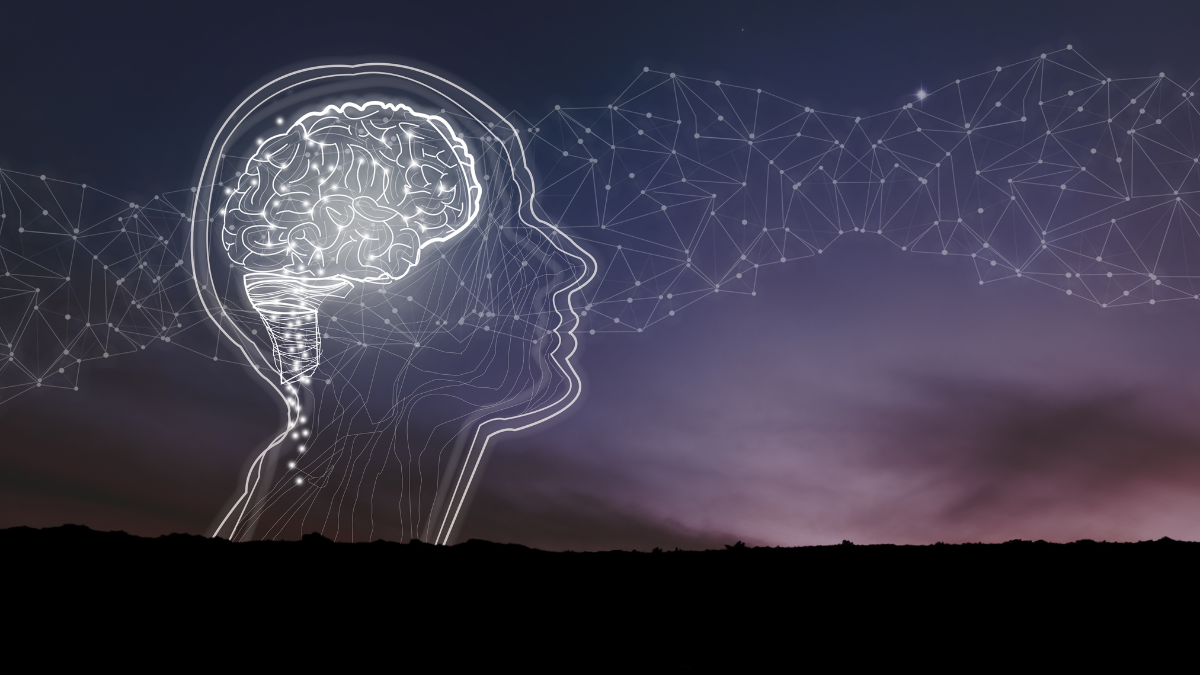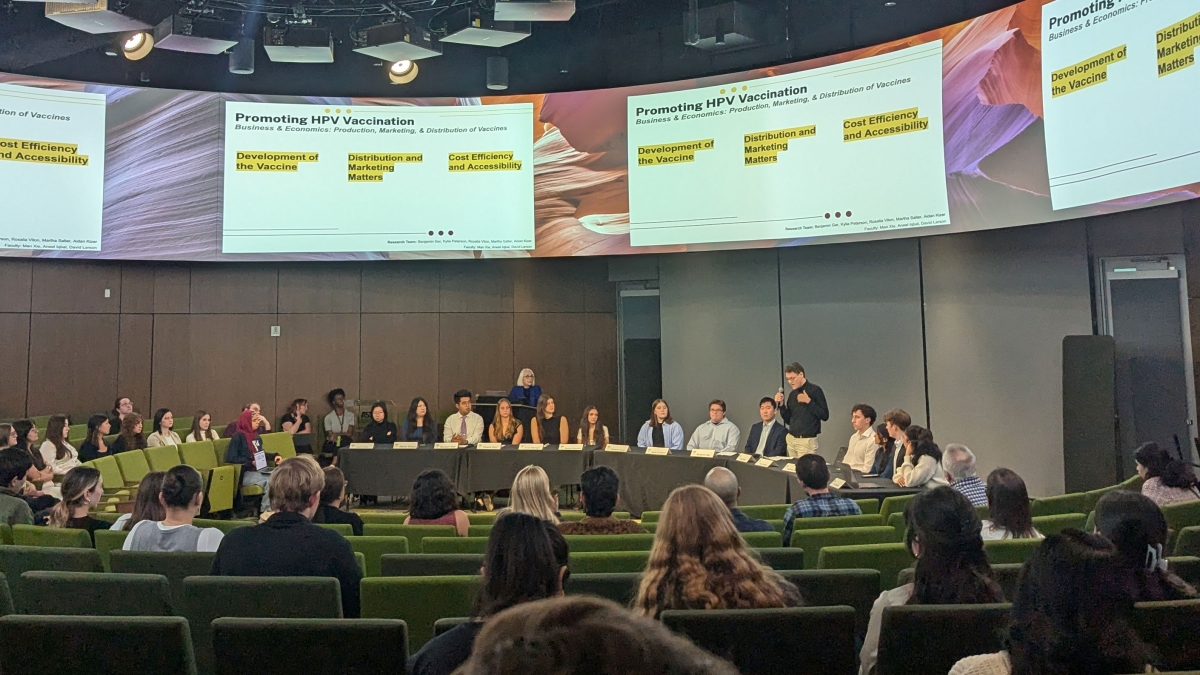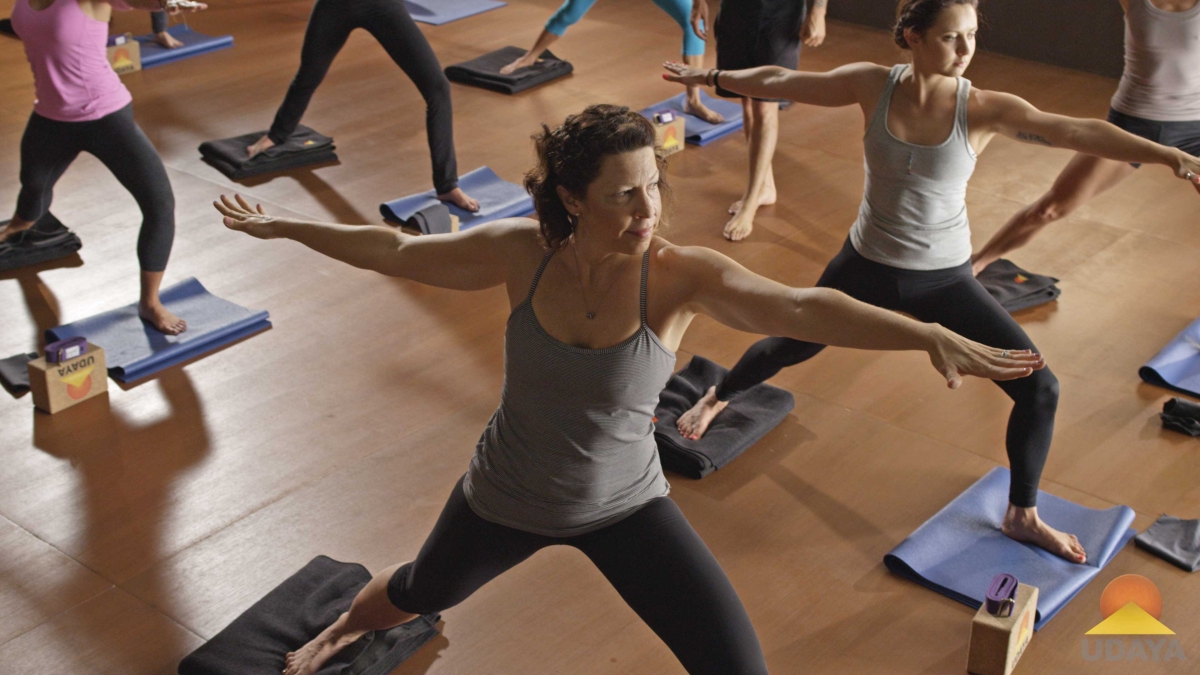Jennifer Huberty didn’t give much thought to the healing effects of yoga — until she lost her child.
It was Jan. 27, 2011, and the ASU health researcher was about to give birth to her first daughter, Raine Madilynne Huberty. She was 39½ weeks pregnant and looked up at the monitor, which revealed her 8-pound, 4-ounce child was not alive.
Raine was stillborn.
“I remember looking at my husband and he was crying. I was in disbelief, yelling at the health-care providers, asking them how this could happen,” said Huberty (pictured above, center), an associate professor in the School of Nutrition and Health Promotion in the College of Health Solutions.
“Giving birth to Raine was the most devastating experience, and I will never forget any moment of that morning.”
Huberty tried grief counseling a few times but quit because it wasn’t doing much for her. She switched to yoga to deal with her grief and discovered it helped.
She thought if it worked for her, it could work for others.
Huberty and her team will be receiving a grant of just under $500,000 from the National Institutes of Health (NIH) to conduct a study investigating the effects of yoga on symptoms of post-traumatic stress disorder after stillbirth.
They’ve already completed a nine-month beta feasibility test of a home-based online-streaming yoga intervention for women who have experienced stillbirth. Twenty participants between the ages of 19 and 44 completed the study; all were women who had experienced a stillbirth within the previous two years. A majority of them reported symptoms of PTSD and depression prior to beginning the study.

Feasibility-study participants accessed online yoga courses through Udaya.com, the only yoga website participating in active research, according to ASU associate professor Jennifer Huberty.
Photos courtesy of Udaya.com
Stillbirth presents a sixfold increased risk for PTSD and a fourfold risk for depression when compared with live, healthy births, research has shownAccording to a research article Huberty co-wrote with Jason Coleman, Katherine Rolfsmeyer and Serena Wu called "A qualitative study exploring women's beliefs about physical activity after stillbirth." (Published November 14, 2014). PTSD and/or depression may contribute to a variety of health problems, including weight retention or gain, increased risk of chronic disease, premature mortality, stress, anxiety and sleep quality.
Mary Queen, who was 36 when she went through a stillbirth in 2012, said she experienced almost all of those symptoms after the death of Rayna, one of her twin daughters. Queen was 38 weeks along and had a C-section scheduled in the afternoon. Her daughter Sara came out fine, but Rayna was stillborn; the doctor said the umbilical cord had gotten wrapped around her neck.
“Many people said to me, ‘Well, you still have a healthy baby,’ but they don’t understand I still suffered the loss of a child,” Queen said from her home in Charleston, West Virginia. “Every time Sara celebrates a milestone, Rayna should have been there with her. I might smile on the outside, but I feel horrible on the inside.
“After you suffer a loss like that, you live in a parallel world of ‘what if?’ My life is now divided into before Rayna and after Rayna. I still get bothered.”
Queen said the next few months were a blur and she fell into a dark place. She said her 3-year-old child and baby Sara were the only things that kept her going. A year later she give birth to another set of twins but couldn’t shake off the loss of Rayna.
When she discovered the online yoga study through a Facebook site, she thought it might make a difference. It has.
“Boy, did it whip my butt,” Queen said, who did up to three 60-minute yoga sessions a week at her peak. “What I liked most about it was that it makes you concentrate on your breathing. During those times I didn’t think about Rayna, and it allowed my brain to shut off for a while. I felt a whole lot better and only saw benefits from taking online yoga.”
Jeni Matthews, a physical activity, nutrition and wellness doctoral student in the College of Health Solutions and yoga instructor who assisted Huberty with the study, said yoga is highly individualized and can be modified for any activity level.
“You don’t have to do it all at once; you can do yoga in smaller increments of time,” Matthews said. “Most of the benefit doesn’t come from the physical part but the breathing and meditation. The important part of yoga is for patients to take the time to practice self-care and quiet the mind.”
“What I liked most about it was that it makes you concentrate on your breathing. During those times I didn’t think about Rayna, and it allowed my brain to shut off for a while.”
— Mary Queen, online-yoga study participant whose daughter was stillborn
Participants access the online yoga sessions through Udaya.com, which was created by film producer and yogi Yariv Lerner. The site offers a library of more than 400 classes, fitness programs and health and wellness challenges. It’s also the only yoga website participating in active research, according to Huberty.
“I didn’t have any funding to conduct the beta test for the feasibility study that is being funded by NIH. I reached out to Yariv and asked him if he would be willing to donate the memberships for mothers of stillbirth,” Huberty said. “He generously and graciously agreed. The chief operating officer, Patty Van de Bogart, supported the entire study without compensation. They were, and still are, an amazing support for the work I am doing.”
Huberty has learned that the recuperative powers of yoga are far-reaching and will seek an additional $2.5 million grant from the NIH in the next year in partnership with Mayo. This time it will be to examine the effects of yoga on symptom burdenSymptom burden refers to the physical and emotional toll of disease and its treatments. in Myeloproliferative Neoplasm (MPN) patients, which is a rare blood cancer.
In a feasibility study Huberty recently conducted with 30 MPN patients over a 12-week period, there was a significant improvement in symptom burden, depressive symptoms, anxiety and sleep. Ryan Eckert, an exercise and wellness master’s student in the College of Health Solutions, shared, “MPN patients felt that one of the most beneficial aspects of the online yoga was the breathing. They learned how to incorporate breathing techniques into their daily lives and are benefiting from this.”
Fifty-seven-year-old Marty Paciocco was diagnosed with MPN two years ago after she got a checkup for severe vertigo, migraine headaches and double vision. While fatigue was also a symptom, she thought that was because she was overworked and stressed at her job.
“I’d come home from work and spend most evenings on the couch and weekends resting and relaxing, gearing up for the week,” said Paciocco, a mental-health and substance-use counselor who lives in Amherst County in Virginia. “I just assumed my age and stress were slowing me down.”
Although Paciocco’s MPN numbers became manageable over time, she still had to deal with fatigue. She discovered the study through a listserv and decided to make a commitment to improve her health.
“Most of the videos were short and I could close my door in my office, move my desk and follow along,” Paciocco said. “My energy level is much better, and physically it feels good to stretch my body. Yoga also slows my brain down and allows me to take a mental break from my work.”
Huberty said the new ASU/Mayo study would investigate the efficacy of online-streaming yoga to reduce fatigue and improve quality of life as compared with a wait-list control group in MPN patients. Additionally, it will explore the feasibility of collecting blood biomarkers that may be associated with fatigue in MPN patients participating in an online yoga intervention.
“As a health professional, it’s wonderful when you can do something for the common good and reach so many people in many places,” Huberty said. “If it’s not going to help people lead a healthier life, then it’s a miss. Luckily for all involved, this is a can’t-miss.”
More Health and medicine
College of Health Solutions program doing its part during Salute to Service
It wasn’t always easy for Marine veteran Chuck Hale when he first returned to civilian life. But he’ll never forget the help he received from a fellow former service member.“The first vet that helped…

What makes human culture unique?
Why is human culture — the shared body of knowledge passed down across generations — so much more powerful than animal cultures?“What’s special about our species?” is a question scientists have…

ASU honors students work on HPV research as part of Barrett College's largest-ever group thesis
Not every undergraduate student comes across the opportunity to do research as part of a team. Even fewer have had the chance to join a team of 86 students doing multidisciplinary research with real-…
